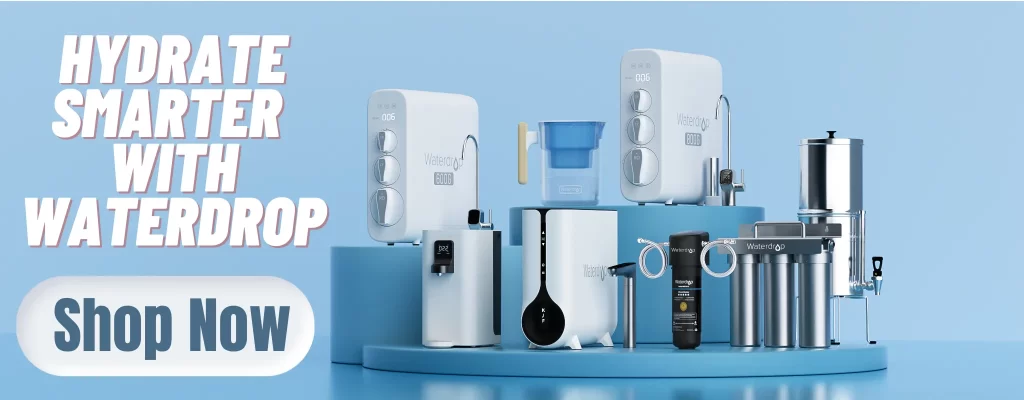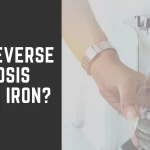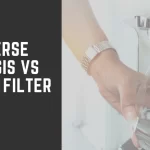Water is essential for our survival, but what if the process of purifying it also leads to wastage? That’s where reverse osmosis (RO) comes in. As someone who has personally experienced the frustration of wasted water, I want to shed light on why this occurs and how we can address this issue effectively.
Table of Contents
The Wastewater Dilemma
As I delved deeper into the world of reverse osmosis (RO), I realized that while it produces purified water, it also generates wastewater. Let’s explore the basics of this dilemma and understand the factors contributing to its generation.
1. Understanding the Basics
When I first discovered how RO works, I was amazed by its ability to separate pure water from contaminants. The process is like a selective gatekeeper, allowing only water molecules to pass through while trapping impurities and minerals in its path. However, this means that every drop of clean water comes at the cost of generating wastewater.
This wastewater contains all those rejected impurities and excess minerals that didn’t make it through the filtration process. It’s like a residue left behind after achieving purity—a necessary but unfortunate consequence.
2. Factors Contributing to Wastewater Generation
- Feed Water Quality: I remember learning about how poor source water quality can have an impact on wastewater production. When the feed water has high levels of contaminants or dissolved solids, more purification is required, resulting in increased wastage.
- Pressure Requirements: Higher pressure aids filtration, ensuring efficient removal of impurities during reverse osmosis. However, this higher pressure also leads to more wastewater generation as some portion becomes necessary for maintaining optimal flow rates.
- Membrane Efficiency: The efficiency of membranes plays a crucial role in both purified water yield and wastewater generation. High-quality membranes with better rejection properties result in cleaner output but may produce relatively more waste due to their effective separation capabilities.
- System Design & Recovery Ratio: Ah yes! System design affects recovery ratio. This ratio represents how much purified water is obtained compared to total feedwater processed by an RO system—higher recovery ratios mean less wastage! Properly designed systems aim for optimum recovery ratios to minimize wastewater volume.
Mitigating Reverse Osmosis Wastewater
As I delved further into the issue of reverse osmosis (RO) wastewater, I discovered that there are ways to mitigate this challenge while maintaining efficient purification. Let’s explore some strategies and technologies aimed at reducing wastage.
Improving System Design:
Optimizing the configuration of RO systems is essential for minimizing wastage without compromising purification efficiency. By fine-tuning parameters such as recovery ratio, system layout, and flow rates, we can strike a balance between producing clean water and reducing the volume of reject water. In my experience, even small adjustments in system design can lead to significant improvements.
Enhanced Membrane Technology:
Advancements in membrane technology offer promising solutions for reducing RO wastewater generation. Low-energy membranes require less pressure to achieve high rejection rates, resulting in reduced energy consumption and subsequently lower volumes of wastage. Additionally, exploring alternatives like forward osmosis presents exciting possibilities by utilizing natural osmotic gradients to drive filtration processes more efficiently.
Recycling & Reusing Wastewater:
A sustainable approach involves recycling and reusing RO wastewater whenever possible. Techniques such as graywater reuse allow treated wastewater from sources like sinks or showers to be repurposed for non-potable applications such as irrigation or toilet flushing—reducing overall demand on freshwater resources. Moreover, connecting an RO system with other water-consuming appliances enables them to utilize rejected water instead of relying solely on fresh input.
Alternative Technologies:
While reverse osmosis remains a popular choice for water purification due to its effectiveness, it’s worth mentioning alternative technologies that generate less wastewater compared to RO systems (trust me, they exist!). These include techniques like electrodialysis reversal (EDR), nanofiltration (NF), or activated carbon filtration—all offering viable options with varying degrees of efficiency and minimal wastage profiles.
By implementing these mitigation strategies and exploring alternative technologies, we can work towards a more sustainable future—where clean water production goes hand in hand with responsible resource management.
Conclusion
In conclusion, reverse osmosis systems generate wastewater due to the nature of their purification process. As I’ve explored this topic, it’s clear that RO separates pure water from contaminants by trapping impurities and minerals in its path. While this ensures clean drinking water, it unavoidably leads to wastage.
Understanding the factors contributing to wastewater generation, such as feed water quality and system design, is crucial for finding ways to minimize this impact.
By adopting improved system designs, exploring enhanced membrane technologies, recycling wastewater, and considering alternative purification methods with lower wastage profiles like EDR or NF, we can work towards a more sustainable approach to water purification.







